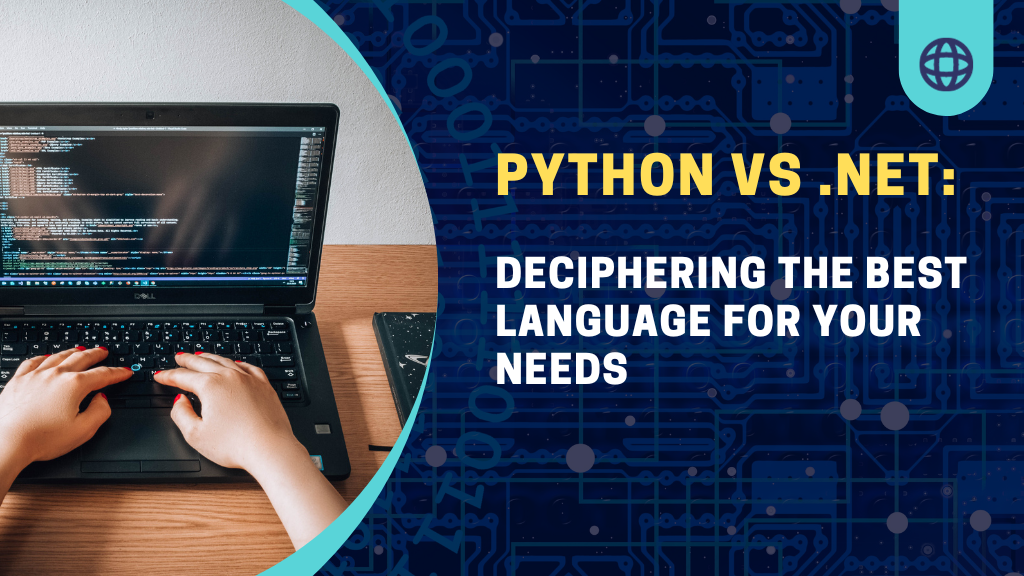When diving into the domain of software development, a few elements play pivotal roles in determining the success of a project: the codebase’s integrity, the expertise of your team, and the nature of the codebase you aim to cultivate. It’s imperative to select a fitting programming language, and in this realm, Python and .Net emerge as contenders.
In the ever-evolving landscape of programming languages, the choice between Python and .NET has become a recurring dilemma for developers and organizations alike.
Both Python and .NET offer distinct advantages and cater to specific needs, making the decision a matter of careful consideration. After delving into the intricacies of Python and .NET, it is clear that each language possesses unique strengths and is ideally suited for different use cases. Therefore, the selection between Python and .NET should be based on the specific requirements of the project, available resources, and long-term objectives.
In the Python vs. .Net debate, both pack a punch. Their unique strengths and nuances make them suited for varied project requisites. While budget, speed, and compatibility are vital, perhaps a blend of both Python and .Net, leveraging Python development services, could be the path forward for multifaceted projects.
Python, renowned for its simplicity and readability, is the preferred language for various domains, including data science, machine learning, web development, and scripting. Its extensive library support, dynamic typing, and concise syntax facilitate rapid development and prototyping, making it an excellent choice for projects that require agility and a quick time-to-market. Python’s vibrant community and robust ecosystem have paved the way for its dominance in data analytics and artificial intelligence, where powerful frameworks like TensorFlow and PyTorch have become the norm. Its versatility, ease of learning, and cross-platform compatibility make Python a solid choice for those who prioritize versatility and accessibility.
Python’s Landscape
Python, an open-source, high-level language, is lauded for its readability, making it a darling among developers. The language, conceived by Guido Van Rossum, champions code clarity, amplified by its adherence to significant whitespace. Encompassing various programming paradigms, Python’s vast standard library stands as its testament to flexibility.
Python shines in multiple realms: from web applications, GUI applications, web services, to more. It boasts of a dynamic typing system, where types are discerned at runtime. Python’s versatility doesn’t limit its prowess, making it ideal for tasks spanning web development to machine learning.
Python’s Business Merits
Python is a versatile language that can be applied to a wide range of applications. It is used for web development, data analysis, scientific computing, artificial intelligence, machine learning, and more. This versatility means that a business can use Python for various projects without the need to learn different programming languages.
Python’s simplicity accelerates the learning curve, with an easily discernible syntax. Its general-purpose nature finds applications across diverse arenas, including data science. However, Python does face criticism for its relatively slower speed compared to C++ or Java, and its lack of inherent GUI support.
Python’s simple and readable syntax promotes rapid development. Developers can write code faster, which translates into reduced development time and lower costs. This increased productivity can help businesses get their products and services to market more quickly.
.Net’s Realm
On the flip side, .Net, a brainchild of Microsoft, stands as a managed software framework. Tailored for crafting applications spanning web, mobile, and desktop realms, its user base extends to millions. .Net’s structured architecture, integrating components like .NET Core and Visual Studio IDE, facilitates comprehensive application development.
.Net in the Business Ecosystem
Advocating for .Net development company, one acknowledges its all-encompassing developmental framework tailored for Microsoft’s platforms. Being open-source, it promotes flexibility and innovation. Components like the .NET Core reinforce its adaptability. Yet, critics pinpoint the financial burdens associated with it, given its non-free nature and potential vendor lock-in scenarios.
.NET, backed by Microsoft, offers a strong foundation for building enterprise-level applications and is particularly advantageous for projects requiring high performance, security, and scalability. The integration of C# with the .NET framework provides a rich set of tools and libraries that empower developers to create robust, Windows-centric applications, web services, and microservices. The introduction of .NET Core (now known as .NET 5 and beyond) has extended its reach to cross-platform development, making it an attractive option for organizations seeking a broad, enterprise-grade platform.
Python vs. .Net: The Duel
Choosing between Python and .Net depends heavily on project demands:
- Python: It’s free, promoting dynamic typing combined with duck typing. This fosters a code culture centered on program efficacy rather than potential misconfiguration.
- .Net: It promises flexibility and robust support with tools like Visual Studio IDE. Yet, challenges like memory leaks or transition difficulties to .Net core sometimes mar its appeal.
The decision between Python and .NET must be context-driven. For data science and machine learning projects, Python reigns supreme, while .NET’s strength lies in building complex, performance-critical applications and services. Considerations such as existing infrastructure, team expertise, and long-term maintenance play pivotal roles in this choice.
Interoperability between Python and .NET is also a noteworthy factor, where tools like IronPython enable seamless integration, allowing developers to leverage the strengths of both languages within a single project. Such a combination can be invaluable when different components of a system require the unique advantages of each language.
In conclusion, the battle of Python vs. .NET cannot be settled with a definitive winner, for both languages have carved out their respective niches and excelled within them. The best choice depends on the project’s demands, the team’s skills, and the long-term vision. Whether it’s Python’s agility and versatility or .NET’s robustness and scalability, the final decision should be a well-informed one, considering the needs of the specific application or system at hand. The key to success is not in picking one over the other but in harnessing the strengths of both languages to create comprehensive and efficient solutions in an ever-evolving technology landscape.



